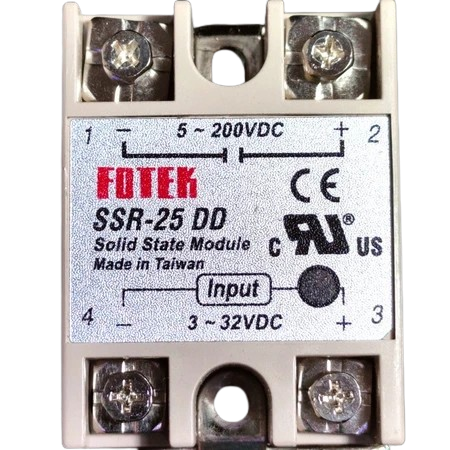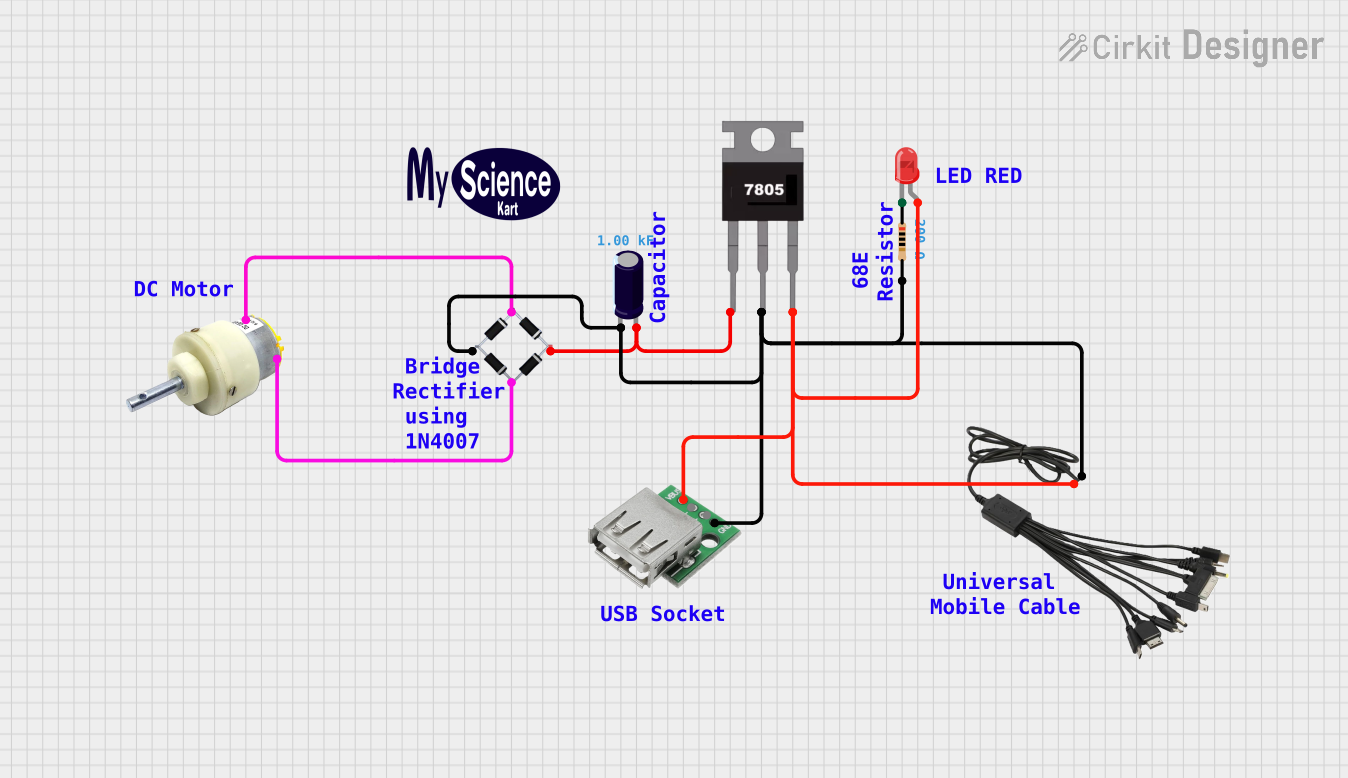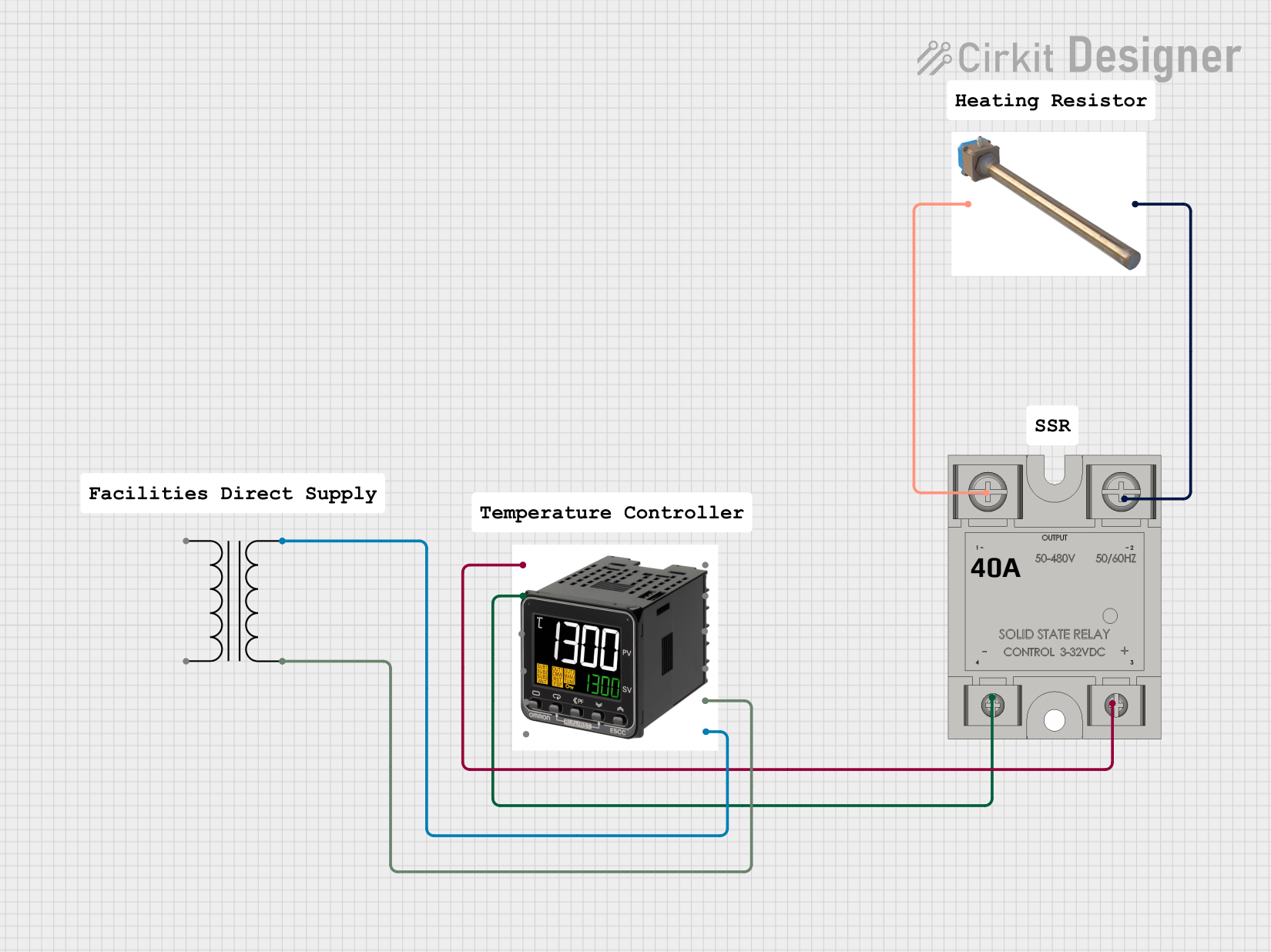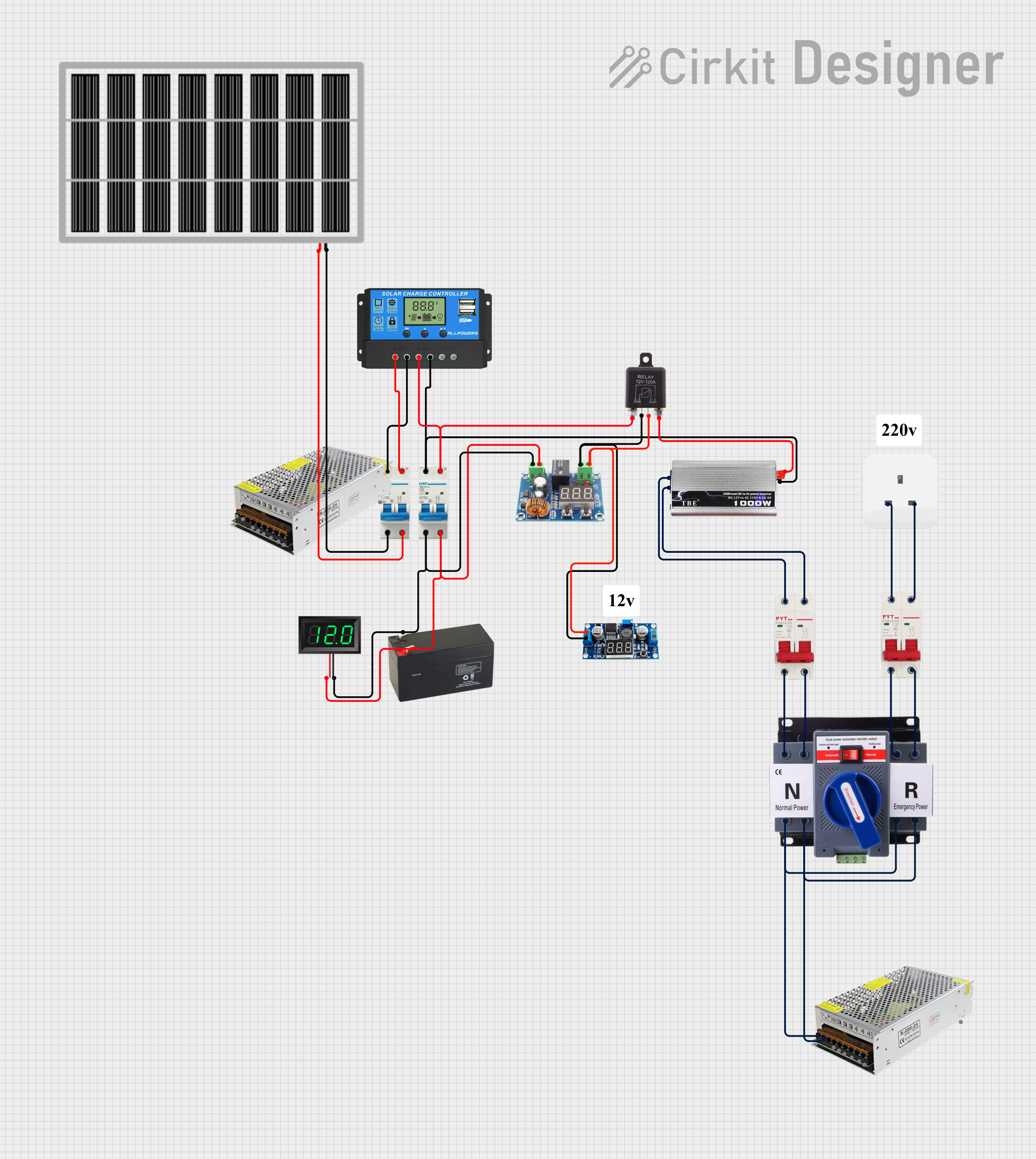
How to Use SSR DC - DC: Examples, Pinouts, and Specs

 Design with SSR DC - DC in Cirkit Designer
Design with SSR DC - DC in Cirkit DesignerIntroduction
The Fotek SSR DC-DC is a Solid State Relay (SSR) designed specifically for DC applications. It enables the control of high-voltage DC loads using low-voltage control signals. Unlike traditional mechanical relays, the SSR DC-DC offers fast switching, high reliability, and no mechanical wear, making it ideal for applications requiring frequent switching or high durability.
Explore Projects Built with SSR DC - DC

 Open Project in Cirkit Designer
Open Project in Cirkit Designer
 Open Project in Cirkit Designer
Open Project in Cirkit Designer
 Open Project in Cirkit Designer
Open Project in Cirkit Designer
 Open Project in Cirkit Designer
Open Project in Cirkit DesignerExplore Projects Built with SSR DC - DC

 Open Project in Cirkit Designer
Open Project in Cirkit Designer
 Open Project in Cirkit Designer
Open Project in Cirkit Designer
 Open Project in Cirkit Designer
Open Project in Cirkit Designer
 Open Project in Cirkit Designer
Open Project in Cirkit DesignerCommon Applications and Use Cases
- Industrial automation systems
- Motor control in DC circuits
- Battery management systems
- Solar power systems
- LED lighting control
- Robotics and mechatronics
Technical Specifications
The Fotek SSR DC-DC is engineered to handle a wide range of DC control and load voltages. Below are the key technical details:
| Parameter | Value |
|---|---|
| Manufacturer | Fotek |
| Part ID | Not specified |
| Control Voltage (Input) | 3-32 V DC |
| Load Voltage (Output) | 5-200 V DC |
| Load Current (Max) | 40 A |
| Switching Speed | ≤ 10 ms |
| Isolation Voltage | ≥ 2500 V AC |
| Operating Temperature | -30°C to +80°C |
| Mounting Type | Panel-mounted |
| Dimensions | 58 mm x 45 mm x 30 mm |
Pin Configuration and Descriptions
The SSR DC-DC typically has four terminals, as described in the table below:
| Pin Number | Label | Description |
|---|---|---|
| 1 | + (Input) | Positive terminal for the control signal (3-32 V DC). |
| 2 | - (Input) | Negative terminal for the control signal (ground). |
| 3 | + (Output) | Positive terminal for the DC load. Connect to the positive side of the load. |
| 4 | - (Output) | Negative terminal for the DC load. Connect to the negative side of the load. |
Usage Instructions
How to Use the SSR DC-DC in a Circuit
Control Signal Connection:
- Connect the positive control signal (3-32 V DC) to the
+ (Input)terminal. - Connect the ground of the control signal to the
- (Input)terminal.
- Connect the positive control signal (3-32 V DC) to the
Load Connection:
- Connect the positive side of the DC load to the
+ (Output)terminal. - Connect the negative side of the DC load to the
- (Output)terminal.
- Connect the positive side of the DC load to the
Power Supply:
- Ensure the load voltage and current do not exceed the SSR's rated specifications (5-200 V DC, 40 A max).
Mounting:
- Secure the SSR to a heat sink or panel to ensure proper heat dissipation during operation.
Testing:
- Apply the control signal to the input terminals and verify that the load is powered correctly.
Important Considerations and Best Practices
- Heat Dissipation: Use a heat sink or cooling fan if the relay operates near its maximum current rating to prevent overheating.
- Polarity: Ensure correct polarity for both the control signal and load connections to avoid damage.
- Isolation: Verify that the control and load circuits are properly isolated to prevent electrical interference.
- Switching Speed: The SSR is designed for fast switching, but avoid exceeding the rated switching frequency to maintain reliability.
- Protection: Use appropriate fuses or circuit breakers to protect the SSR and connected components from overcurrent or short circuits.
Example: Connecting to an Arduino UNO
The SSR DC-DC can be controlled using an Arduino UNO. Below is an example circuit and code to toggle a DC load using a digital pin.
Circuit Diagram
- Connect the Arduino's digital pin (e.g., pin 9) to the
+ (Input)terminal of the SSR. - Connect the Arduino's ground (GND) to the
- (Input)terminal of the SSR. - Connect the DC load to the
+ (Output)and- (Output)terminals of the SSR. - Ensure the load has a separate power supply within the SSR's rated voltage and current.
Arduino Code
// Define the pin connected to the SSR control input
const int ssrPin = 9;
void setup() {
// Set the SSR pin as an output
pinMode(ssrPin, OUTPUT);
}
void loop() {
// Turn the SSR (and load) ON
digitalWrite(ssrPin, HIGH);
delay(1000); // Keep the load ON for 1 second
// Turn the SSR (and load) OFF
digitalWrite(ssrPin, LOW);
delay(1000); // Keep the load OFF for 1 second
}
Troubleshooting and FAQs
Common Issues and Solutions
The load does not turn on:
- Verify that the control signal voltage is within the specified range (3-32 V DC).
- Check the polarity of the control signal and load connections.
- Ensure the load voltage and current are within the SSR's rated specifications.
The SSR overheats:
- Ensure proper heat dissipation using a heat sink or cooling fan.
- Verify that the load current does not exceed the maximum rating (40 A).
The SSR does not switch off:
- Check for residual voltage on the load side. Some SSRs may have a small leakage current.
- Ensure the control signal is completely removed when turning off the SSR.
The SSR fails to operate:
- Inspect for physical damage or signs of overheating.
- Test the SSR with a known working control signal and load.
FAQs
Q: Can the SSR DC-DC handle AC loads?
A: No, this SSR is designed specifically for DC loads. For AC loads, use an AC-AC or DC-AC SSR.
Q: Is the SSR polarity-sensitive?
A: Yes, both the control signal and load connections must follow the correct polarity.
Q: Can I use the SSR for PWM control?
A: While the SSR supports fast switching, it is not ideal for high-frequency PWM control. Use a dedicated DC motor driver or MOSFET for such applications.
Q: How do I know if the SSR is working?
A: Apply a control signal and measure the voltage across the load terminals. If the load voltage matches the expected value, the SSR is functioning correctly.